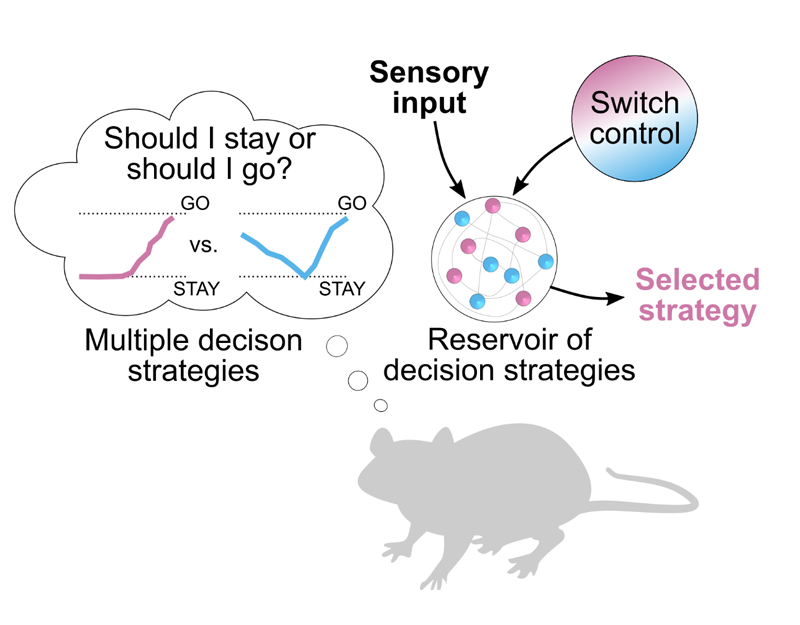Fanny CazettesScientist
Institut de neurosciences de la Timone (INT)1
DIVERSE (Horizon Europe - ERC StG 101163107)
Understanding diversity in decision strategy: from neural circuits to behavior
The brain has the remarkable ability to imagine diverse solutions to complex problems and to rapidly switch between them to adapt to new situations. Such properties are essential for adaptive behavior but remain poorly understood, partly due to the prevalent focus in previous studies on stereotypical behaviors. Here, we will adopt a fundamentally different approach by exploring the neural properties underlying diversity in decision strategy, aiming to provide greater insights into how the brain operates in natural conditions.
By leveraging novel computational methods that identify changes in behavioral strategy combined with the latest advances in electrophysiological recording and optical manipulation in mice, the overarching goal of the project is to understand how the brain switches between different decision strategies. We hypothesize that the brain achieves remarkable flexibility by running multiple decision processes in parallel, allowing animals to select one decision strategy while their brains maintain several alternative solutions readily available for quick adaptation. We will test this hypothesis through a series of experiments that aim at determining:
(1) Which neural circuits are involved in strategy selection?
(2) What neural mechanisms control changes in strategy?
(3) How to trigger a strategy in neural circuits and behaviors?
We will address these questions using mice in the context of foraging, a fundamental survival behavior shared among all animals, involving the search for resources in dynamic environments. The project will deliver a rich and unique neural and behavioral dataset, enabling the development of a novel conceptual framework for behavioral flexibility as an adaptive selection mechanism of parallel decision computations. Ultimately, this research will contribute to solving various aspects of the decision-making puzzle and provide a foundation for explaining the diversity in behaviors, including those that deviate from the norm.

- 1Aix-Marseille Université/CNRS
